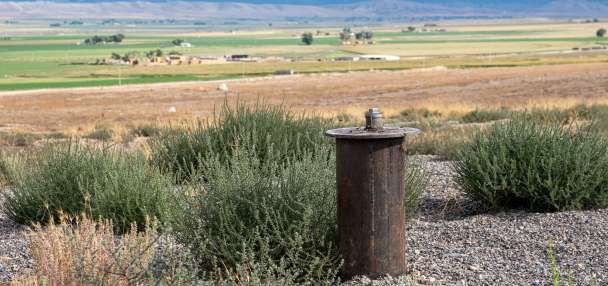Estimated read time: 4-5 minutes
This archived news story is available only for your personal, non-commercial use. Information in the story may be outdated or superseded by additional information. Reading or replaying the story in its archived form does not constitute a republication of the story.
SALT LAKE CITY — The Church of Jesus Christ of Latter-day Saints is cutting back on watering lawns and landscapes at temples, meetinghouses and other buildings across the West in an effort to conserve water amid a worsening regional drought.
"Much of the American West is experiencing serious drought. In this area of the United States, the church is working to reduce water use in all our buildings and facilities, including exterior landscaping," church officials said in a statement Wednesday.
Officials said the church already switched to water-wise irrigation systems and low-flow plumbing systems for new projects beginning in the early 2000s, and that it is working to retrofit other properties that pre-date that time period. They plan on expanding the use of smart controllers, hydrometers, rain sensors, drip irrigation and use of secondary or reclaimed water to help water lawns and landscapes effectively.
Still, with the persistent drought, the church plans on cutting back its use of water on lawns and landscapes this summer. They say that some landscapes "will be permitted to brown and become dormant" as a result of the decision. This includes changing watering schedules to meet any local government guidelines placed anywhere in the West that has them as church officials continue to monitor drought conditions.
The U.S. Drought Monitor currently lists about 44% of the country's nine western-most continental states in at least extreme drought, with a little over 10% in exceptional drought.
At least two-thirds of the region is listed in at least a severe drought. Utah, Arizona, Nevada, New Mexico and Oregon are among the most-impacted states at the moment. About 83% of Utah remains in at least extreme drought at the moment.
This is, of course, on top of the Western megadrought, due to a series of similar droughts over the past two decades that is the main culprit for low water levels at some of the largest reservoirs in the West, such as Lake Powell and Lake Mead. It's also why the Great Salt Lake has dropped to record-low levels and will again this year.
The megadrought is considered the worst of its kind in 1,200 years. Experts say one way to help reservoirs — especially the reservoirs closest to communities — is to reduce the amount of water used for lawns and landscapes. Latter-day Saint officials said they don't have an estimate at the moment regarding how much water might be saved through the announced cutbacks.
"We all play a part in preserving the critical resources needed to sustain life — especially water — and we invite others to join us in reducing water use wherever possible," church officials added. "We gladly join with friends of other faiths in prayer to our Heavenly Father for rain and respite from the devastating drought."
Wednesday's announcement is the latest example of governments, organizations and companies that have pledged to reduce secondary water consumption or found ways to be more efficient with watering, especially after Utah Gov. Spencer Cox issued an emergency declaration earlier this year. He's still pushing for people to conserve as much water as possible even as that declaration expired.
As it stands now, Utah's statewide reservoir system is about 62% full. Among those voluntarily cutting back:
- The Salt Lake County Council voted on Tuesday to approve plans to convert three sports fields to artificial turf and to flip park strips at 40 county facilities for $2.2 million. Combined, the efforts cost about $8.4 million but county leaders say the efforts are projected to conserve about 11.8 million gallons of water every year.
- The Davis County School District announced plans last week to install drought-tolerant lawns and landscaping with customized irrigation at nearly 100 district properties, mirroring landscaping at Farmington High School that thrived even with a 60% cut in water use last year.
- Volunteers helped flip 20 park strips in the Wasatch Front during a "Flip Blitz" event in May. Experts say a homeowner can save 5,000 to 10,000 gallons of water annually by flipping their park strips.
- Weber State University unveiled an updated water conservation plan in April that is set to save 50 million gallons of water annually. The university previously reduced water usage by 30% from an initial plan completed in 2019.
- Also in April, Intermountain Healthcare said it would overhaul its landscaping to save over 17.5 million gallons of water every year.










